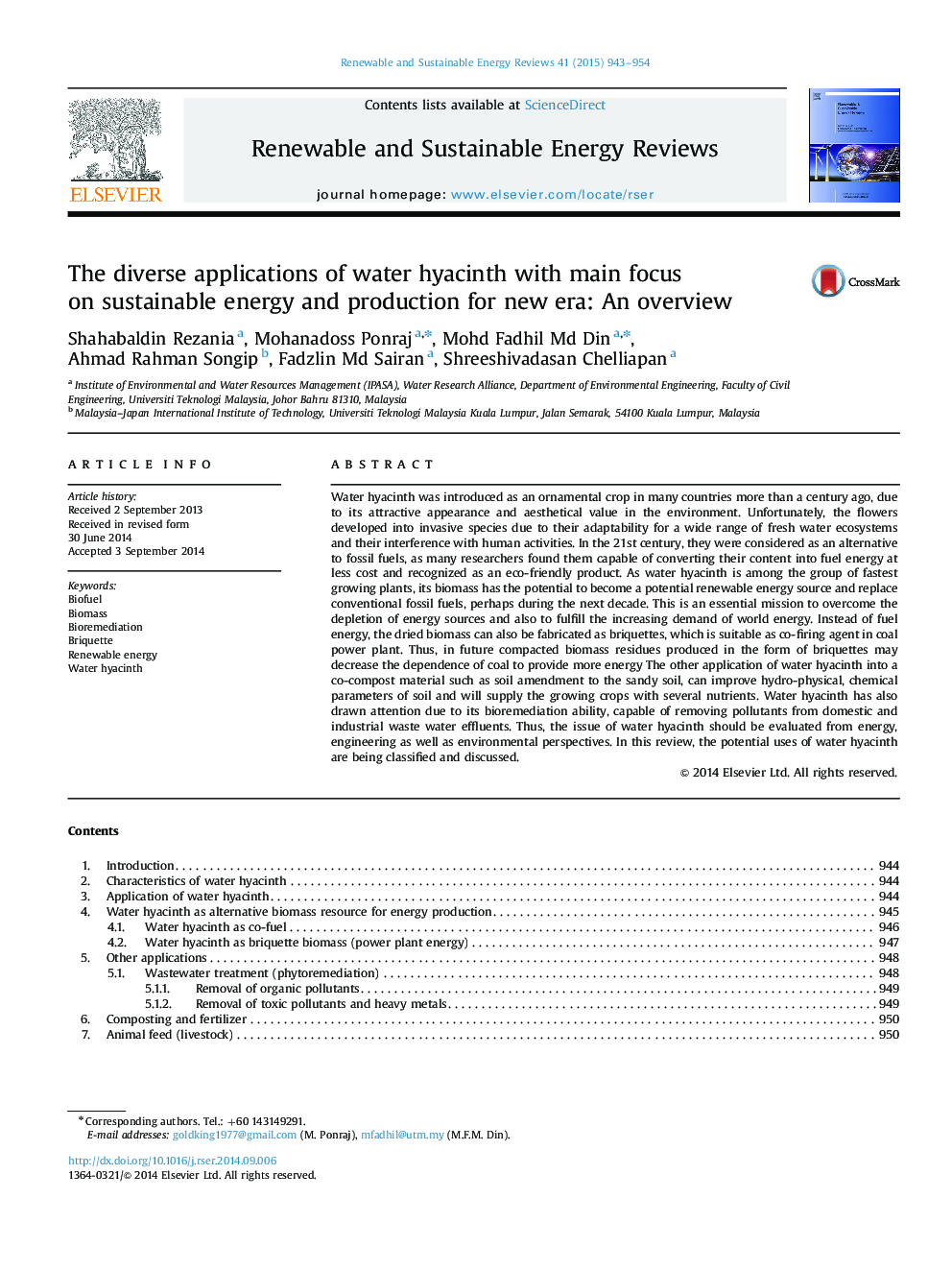| Article ID | Journal | Published Year | Pages | File Type |
|---|---|---|---|---|
| 8118694 | Renewable and Sustainable Energy Reviews | 2015 | 12 Pages |
Abstract
Water hyacinth was introduced as an ornamental crop in many countries more than a century ago, due to its attractive appearance and aesthetical value in the environment. Unfortunately, the flowers developed into invasive species due to their adaptability for a wide range of fresh water ecosystems and their interference with human activities. In the 21st century, they were considered as an alternative to fossil fuels, as many researchers found them capable of converting their content into fuel energy at less cost and recognized as an eco-friendly product. As water hyacinth is among the group of fastest growing plants, its biomass has the potential to become a potential renewable energy source and replace conventional fossil fuels, perhaps during the next decade. This is an essential mission to overcome the depletion of energy sources and also to fulfill the increasing demand of world energy. Instead of fuel energy, the dried biomass can also be fabricated as briquettes, which is suitable as co-firing agent in coal power plant. Thus, in future compacted biomass residues produced in the form of briquettes may decrease the dependence of coal to provide more energy The other application of water hyacinth into a co-compost material such as soil amendment to the sandy soil, can improve hydro-physical, chemical parameters of soil and will supply the growing crops with several nutrients. Water hyacinth has also drawn attention due to its bioremediation ability, capable of removing pollutants from domestic and industrial waste water effluents. Thus, the issue of water hyacinth should be evaluated from energy, engineering as well as environmental perspectives. In this review, the potential uses of water hyacinth are being classified and discussed.
Related Topics
Physical Sciences and Engineering
Energy
Renewable Energy, Sustainability and the Environment
Authors
Shahabaldin Rezania, Mohanadoss Ponraj, Mohd Fadhil Md Din, Ahmad Rahman Songip, Fadzlin Md Sairan, Shreeshivadasan Chelliapan,
